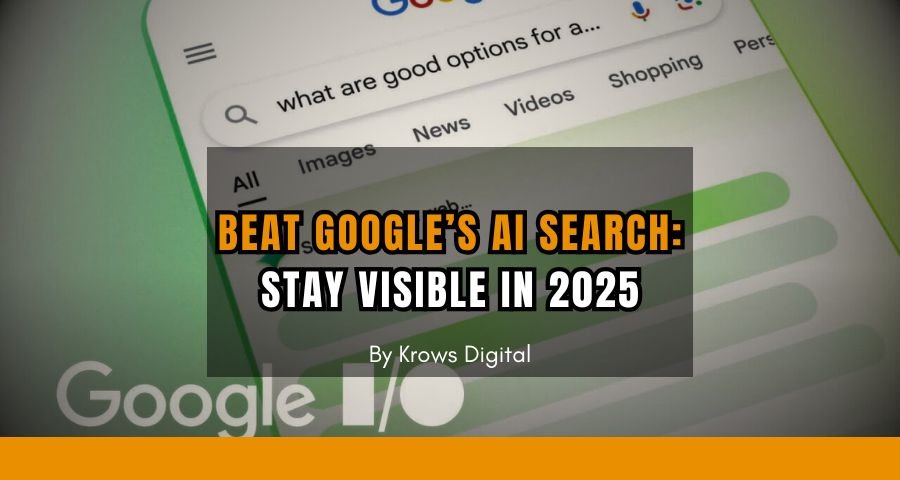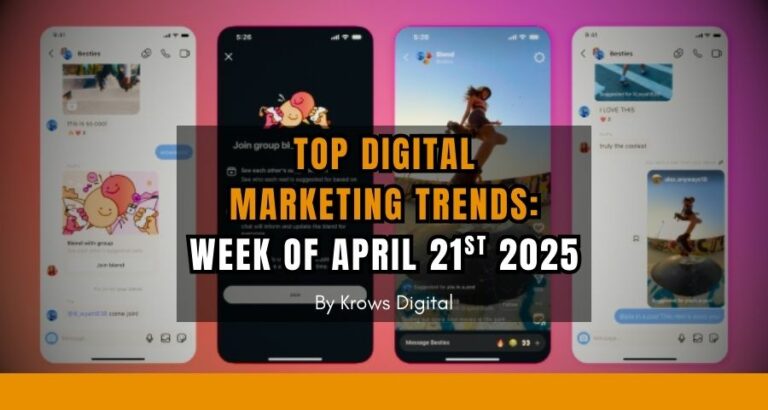Google’s Search Generative Experience (SGE)—now simply branded as AI Mode and AI Overviews—is rolling out worldwide. Instead of ten blue links, many queries now trigger an instant, AI‑written answer that cites a handful of sources and lets users refine the conversation without leaving Google. According to industry tracking, 84 % of U.S. searches already surface an AI Overview, and international coverage is accelerating month‑by‑month. (SEO Discovery)
For small and mid‑sized businesses (SMEs) that rely on organic traffic, this is the biggest search shake‑up since mobile indexing. Below is a 1 500‑word guide to what AI Search is, how it changes user behaviour, and—most importantly—the concrete steps an SME can take today to keep (and expand) online visibility.
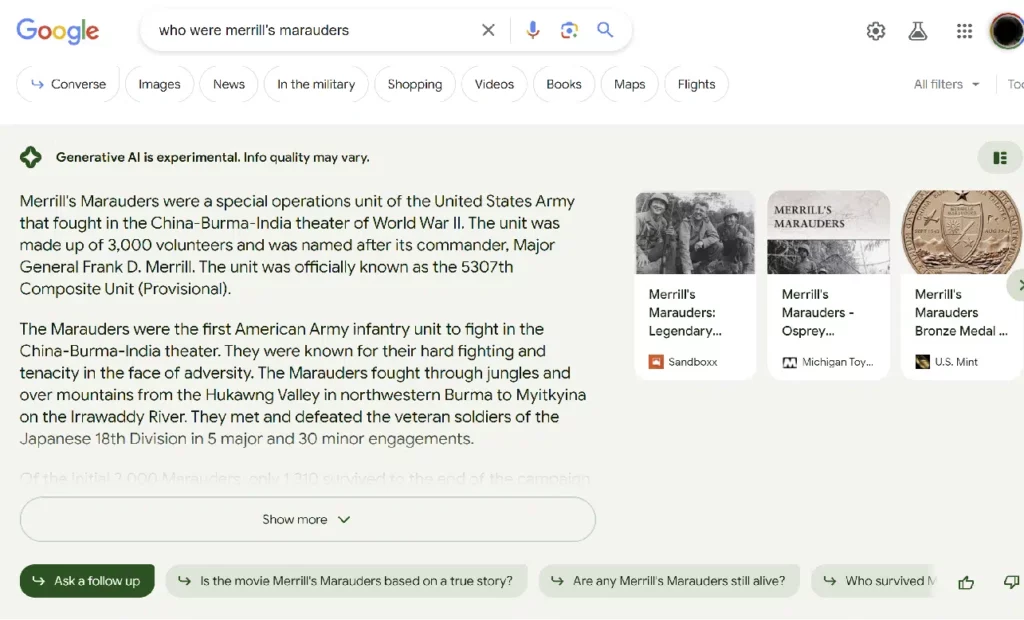
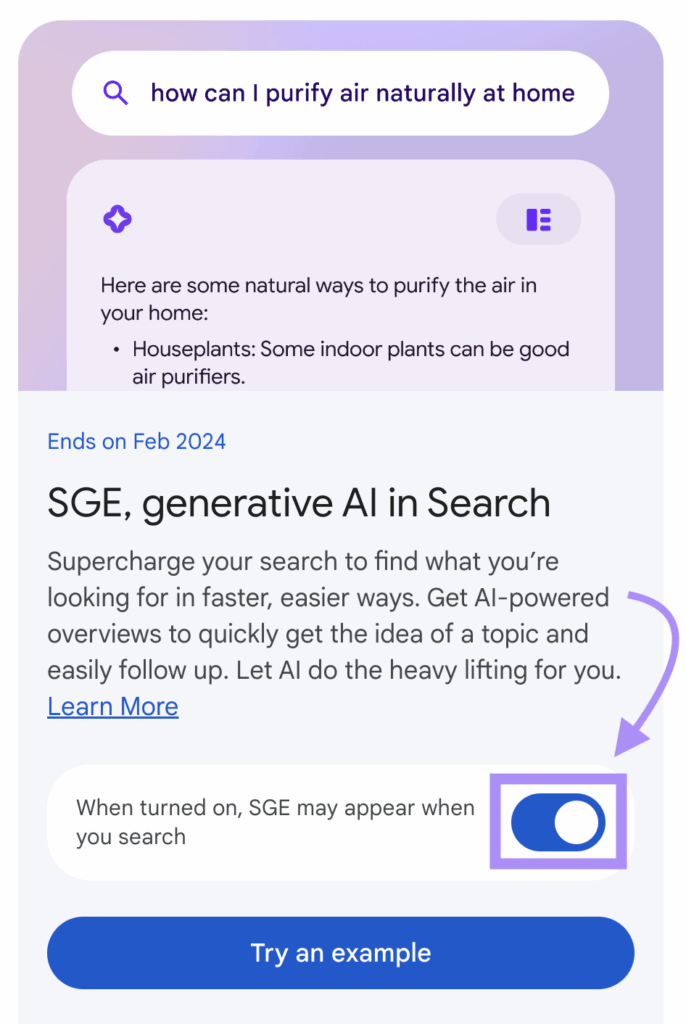
1. What exactly is Google’s AI Search?
| Milestone | What changed | Why it matters |
|---|---|---|
| May 2024 – “AI Overviews” U.S. launch | Generative answers added above organic results for complex queries. | Fewer clicks flow to traditional links. (blog.google) |
| January 2025 – AI Mode subscription | Power users can toggle a full conversational interface, supported by Gemini 2.5. | Longer, multi‑step sessions live entirely inside Google. (Tom's Guide) |
| June–July 2025 – Global expansion | AI Overviews reach Europe, APAC and Latin America; June core update completes roll‑out. | SMEs everywhere now feel the impact. (Search Engine Land) |
Instead of scanning a results page, a user might type “How can a coffee‑shop owner in Tokyo cut electricity costs?” and instantly receive a paragraph with tips, links, and suggested follow‑ups (“Show me government subsidies”). Only the lucky few sources cited inside that answer get meaningful traffic.
2. How AI Search changes user behaviour
- Queries are longer and conversational. A May 2025 study shows ten‑word queries trigger AI Overviews five times more often than single‑word queries. (SE Ranking)
- Zero‑click searches rise. Users often find enough in the AI summary and never leave Google.
- Exploration stays in‑line. Google offers follow‑up buttons (“Compare solar vs. LED”) that keep the session inside AI Mode.
For SMEs, this means traditional keyword volumes may drop, but topic authority and citation potential become priceless.
3. Risk and opportunity for SMEs
- Risk: If your site isn’t cited in AI Overviews, you could see double‑digit traffic declines (some publishers already report 15–30 % drops for informational pages).
- Opportunity: Being featured in the summary acts like Position 0 on steroids—users trust the AI’s short list, and click‑through rates can outperform standard #1 rankings.
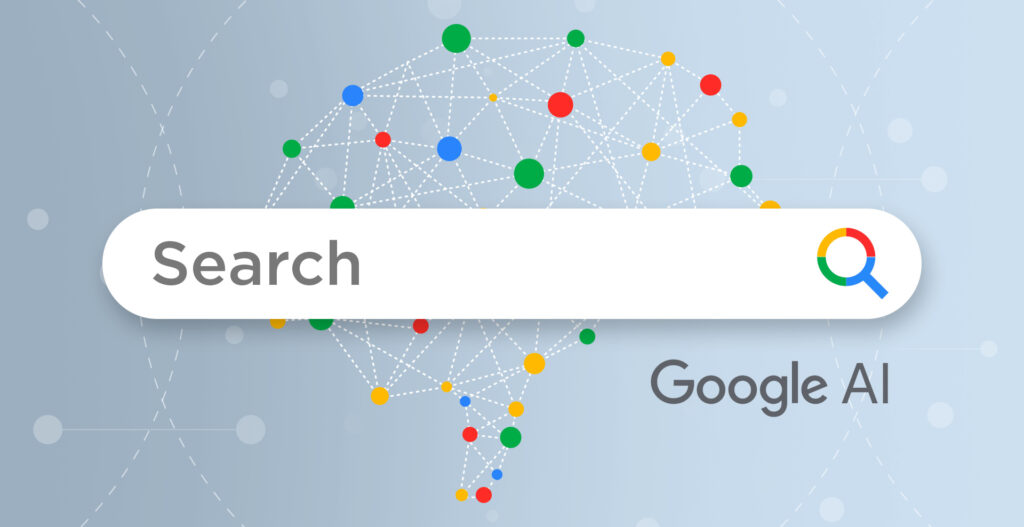
4. Google’s own advice: “Helpful, people‑first content”
In May 2025 Google published new guidance on succeeding in AI Search: focus on unique, helpful content, answer real questions, add video, and use structured data so AI can parse your pages. (Google for Developers) The message is clear: E‑E‑A‑T (Experience, Expertise, Authoritativeness, Trust) still rules, but you must package it so AI can summarise it.
5. The AI‑SEO checklist for 2025
- Answer‑first formatting
- Open articles with a 40–60‑word summary that directly answers the query (mirrors how AI snippets read).
- Q&A sub‑headings
- Use H2s phrased as questions; AI models lift these verbatim.
- Embed short explainer videos
- Google prioritises pages that mix formats; a 60‑second clip can secure the coveted video citation block.
- Add structured data (schema.org)
- FAQ, HowTo, Product, and Review schemas help AI extract facts reliably.
- Show real‑world experience
- First‑party images, data tables, and case studies signal authenticity—harder for commodity AI content to replicate.
- Create follow‑up anchors
- Anticipate “people also ask” style follow‑ups in your copy so Google can keep the conversation flowing with your content.
- Refresh core pages quarterly
- AI Overviews favour recently updated sources; add new stats or examples every 90 days.
- Optimise for entity consistency
- Ensure your brand, address, and key products are referenced the same way across site, social, and knowledge panels.
- Leverage author bios
- Show credentials (“10 years café operations”) to reinforce expertise cues.
- Monitor AI impressions
- Tools like SISTRIX and Semrush now estimate AI Overview citations—track shifts weekly.
6. Case study: an SME coffee‑roaster adapts
- Old approach: A blog post titled “Best coffee beans 2024” chasing a high‑volume keyword.
- AI‑ready rewrite:
- Title: “How to choose coffee beans for pour‑over (Tokyo café guide 2025)”
- Opening answer: “For a balanced pour‑over, pick a washed Ethiopian bean roasted 7–10 days ago. Aim for a medium grind…”
- Added FAQ schema and a 45‑second Reels‑style video.
- Outcome: Within six weeks, the page became a cited source for queries like “best beans for v60 in Tokyo.” Impressions from AI Overviews grew while classic keyword traffic held steady.
7. Local and hyper‑local AI search
Google’s AI now tailors results down to a few city blocks. The June 2025 update emphasised hyperlocal context: proximity, store hours, and even real‑time inventory. (mapranks.com)
Action items for local SMEs:
- Keep Google Business Profile updated daily (hours, products, images).
- Embed schema location markup on contact pages.
- Encourage fresh Google Reviews that mention specific services (AI often quotes review snippets).
8. Measuring success in an AI‑search world
- Expect lower CTR from classic positions; aim for citation count in AI summaries.
- Track long‑tail query traffic (8+ words) – it’s rising fastest.
- Use GA4’s Search Console integration plus third‑party AI‑visibility tools to see which pages appear in Overviews.
9. Paid search implications
Industry analysts predict paid placements will enter AI Overviews once user trust stabilises. (Xponent21) SMEs should budget for Potential “AI Top Spots” the same way they reserve for Shopping Ads today. Early adopters will get cheaper CPCs before auctions mature.
10. Action plan for July–September 2025
| Week | Task |
|---|---|
| 1 | Audit top 20 landing pages for answer‑first formatting & schema. |
| 2‑3 | Produce 3 short‑form videos that summarise cornerstone content. |
| 4 | Refresh Google Business Profile photos and Q&A section. |
| 5 | Implement AI‑SEO checklist on two new blog posts targeting long‑tail, question‑style queries. |
| 6 | Review AI Overview visibility; iterate. |
Conclusion
Google’s AI Search isn’t a future scenario—it is the default experience for hundreds of millions of users today, and its reach grows daily. SMEs that cling to classic keyword tactics risk invisibility. The good news: the playbook above lets nimble businesses outrank slower, bigger rivals by speaking the language of AI—clear answers, structured data, authentic expertise, and multimedia.
Start optimising now, monitor AI‑Overview citations, and you’ll turn the disruption into a visibility windfall.
Need help implementing AI‑ready SEO?
Krows Digital specialises in future‑proof content strategies and technical optimisation for SMEs. Reach out for a free AI search audit this month.

